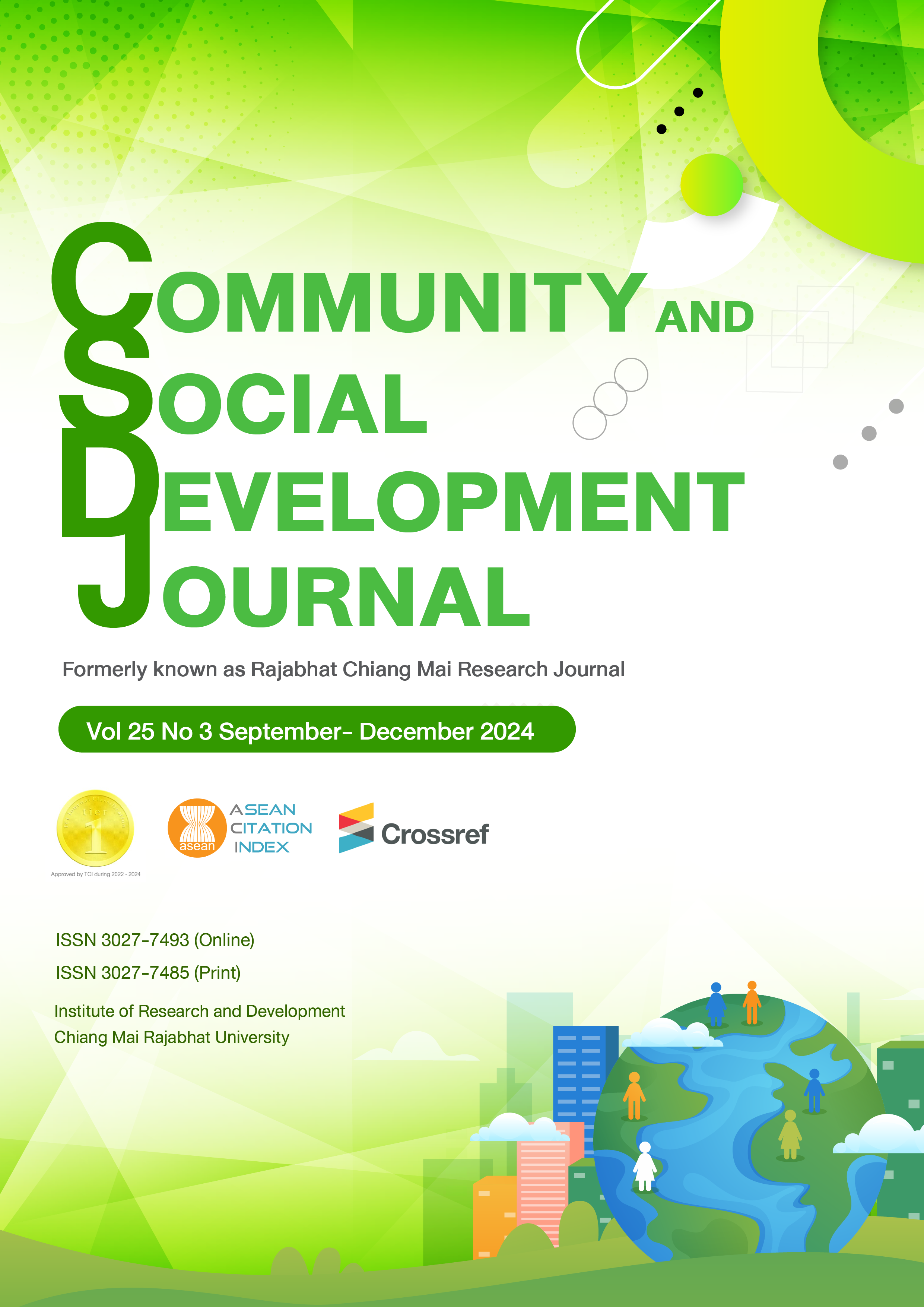Self-Efficacy and Mathematics Learning Experience Using 5Es Model among Pre-service Teachers
DOI:
https://doi.org/10.57260/csdj.2024.268513Keywords:
Self-efficacy, Mathematics, Learning experience, Higher educationAbstract
This study employs a descriptive-correlational design, using both qualitative and quantitative approaches, to investigate the self-efficacy levels of pre-service mathematics teachers in relation to their exposure to the 5Es instructional phases. Data was gathered from 106 pre-service mathematics teachers at Batangas State University Campuses during the academic year 2020-2021 using a researcher-made questionnaire and focus group discussions. Mean, Standard deviation, Pearson r, and Thematic Analysis were used to analyze the data. The results reveal a strong correlation between pre-service teachers' self-efficacy in mathematics and their exposure to the 5Es instructional phases. Additionally, it suggests the potential effectiveness of a researcher-made mathematics learning guide in enhancing students' self-efficacy in mathematics. This research underscores the importance of diverse learning strategies for mastering mathematical concepts, encourages instructors to innovate and adapt their instructional practices based on the 5Es model to enhance students' self-efficacy in mathematics, and calls for future research to explore additional factors that influence students' self-efficacy when exposed to 5Es instructional phases.
Downloads
References
Bandura, A. (1977). Self-efficacy: Toward a Unifying Theory of Behavioral Change. Psychological Review, 84(2), 191-215. Retrieved from https://psycnet.apa.org/doi/10.1037/0033-295X.84.2.191
Bernacki, M. L., Greene, J. A., & Crompton, H. (2020). Mobile technology, learning, and achievement: Advances in understanding and measuring the role of mobile technology in education. Contemporary Educational Psychology, 60, 101827. Retrieved from https://doi.org/10.1016/j.cedpsych.2019.101827
Beswick, K. (2012). Teachers' beliefs about school mathematics and mathematicians' mathematics and their relationship to practice. Educational Studies in Mathematics, 79(1), 127-147. Retrieved from https://doi.org/10.1007/s10649-011-9333-2
Czocher, J. A., Melhuish, K., & Kandasamy, S. S. (2020). Building mathematics self-efficacy of STEM undergraduates through mathematical modelling. International Journal of Mathematical Education in Science and Technology, 51(6), 807-834. Retrieved from https://doi.org/10.1080/0020739X.2019.1634223
Daneshamooz, S., & Alamolhodaei, H. (2012). Cooperative learning and academic hardiness on students’ mathematical performance with different levels of mathematics anxiety. Educational Research, 3(3), 270-276. Retrieved from http://www.interesjournals.org/ER
Dutcher, J. M., & Creswell, J. D. (2018). The role of brain reward pathways in stress resilience and health. Neuroscience & Biobehavioral Reviews, 95, 559-567. Retrieved from https://doi.org/10.1016/j.neubiorev.2018.10.014
Griggs, M. S., Rimm-Kaufman, S. E., Merritt, E. G., & Patton, C. L. (2013). The Responsive Classroom approach and fifth grade students’ math and science anxiety and self-efficacy. School Psychology Quarterly, 28(4), 360. Retrieved from https://psycnet.apa.org/doi/10.1037/spq0000026
Gurat, M. G. (2018). Mathematical Problem-Solving Strategies among Student Teachers. Journal on Efficiency and Responsibility in Education and Science, 11(3), 53-64. Retrieved from https://www.eriesjournal.com/index.php/eries
Hoover, J. D., Giambatista, R. C., & Belkin, L. Y. (2012). Eyes on, hands on: Vicarious observational learning as an enhancement of direct experience. Academy of Management Learning & Education, 11(4), 591-608. Retrieved from https://doi.org/10.5465/amle.2010.0102
Hussain, I. (2012). Use of constructivist approach in higher education: An instructors’ observation. Creative Education, 3(02), 179. Retrieved from http://dx.doi.org/10.4236/ce.2012.32028
Kolb, A. Y., & Kolb, D. A. (2012). Experiential learning theory. Encyclopedia of the Sciences of Learning, 1215-1219. Retrieved from https://doi.org/10.1007/978-1-4419-1428-6_227
Mesa, V. (2012). Achievement goal orientations of community college mathematics students and the misalignment of instructor perceptions. Community College Review, 40(1), 46-74. Retrieved from https://doi.org/10.1177/0091552111435663
Murata, A., Bofferding, L., Pothen, B. E., Taylor, M. W., & Wischnia, S. (2012). Making connections among student learning, content, and teaching: Teacher talk paths in elementary mathematics lesson study. Journal for Research in Mathematics Education, 43(5), 616-650. Retrieved from https://doi.org/10.5951/jresematheduc.43.5.0616
O’Shea, J., & Leavy, A. M. (2013). Teaching mathematical problem-solving from an emergent constructivist perspective: the experiences of Irish primary teachers. Journal of Mathematics Teacher Education, 16(4), 293-318. Retrieved from https://doi.org/10.1007/s10857-013-9235-6
Rahiem, M. D. (2021). Remaining motivated despite the limitations: University students’ learning propensity during the COVID-19 pandemic. Children and Youth Services Review, 120, 105802. Retrieved from https://doi.org/10.1016/j.childyouth.2020.105802
Rimm-Kaufman, S. E., Larsen, R. A., Baroody, A. E., Curby, T. W., Ko, M., Thomas, J. B., Merritt, E. G., Abry, T., & DeCoster, J. (2014). Efficacy of the responsive classroom approach: Results from a 3-year, longitudinal randomized controlled trial. American educational research journal, 51(3), 567-603. Retrieved from http://aer.sagepub.com/content/51/3/567
Sadiku, L. M. (2015). The importance of four skills reading, speaking, writing, listening in a lesson hour. European Journal of Language and Literature, 1(1), 29-31. Retrieved from https://revistia.org/files/articles/ejls_v1_i1_15/Lorena_Manaj.pdf
Sharma, R., Jain, A., Gupta, N., Garg, S., Batta, M., & Dhir, S. K. (2016). Impact of self-assessment by students on their learning. International Journal of Applied and Basic Medical Research, 6(3), 226-229. Retrieved from https://doi.org/10.4103%2F2229-516X.186961
Skaalvik, E. M., Federici, R. A., & Klassen, R. M. (2015). Mathematics achievement and self-efficacy: Relations with motivation for mathematics. International Journal of Educational Research, 72, 129-136. Retrieved from https://doi.org/10.1016/j.ijer.2015.06.008
Stangor, C., & Walinga, J. (2014). 3.5 Psychologists Use Descriptive, Correlational, and Experimental Research Designs to Understand Behaviour. In Introduction to Psychology.
Villas, J. (2019). Self-efficacy of Filipino senior high school students: Differences among tracks/strand and type of school. Journal of Education and Practice, 10(8), 7-13. Retrieved from https://core.ac.uk/reader/234642440
Zee, M., & Koomen, H. M. (2016). Teacher self-efficacy and its effects on classroom processes, student academic adjustment, and teacher well-being: A synthesis of 40 years of research. Review of Educational research, 86(4), 981-1015. Retrieved from https://doi.org/10.3102/0034654315626801
Downloads
Published
How to Cite
Issue
Section
License
Copyright (c) 2024 Community and Social Development Journal

This work is licensed under a Creative Commons Attribution-NonCommercial-NoDerivatives 4.0 International License.
1. Articles, information, content, images, etc published in the “Community and Social Development Journal” are copyrighted by the Community and Social Development Journal, Chiang Mai Rajabhat University. In order to properly distribute the articles through print and electronic media, the authors still hold the copyright for the published articles under the Creative Commons Attribution (CC BY) license, which allows the re-distribution of the articles in other sources. References must be made to the articles in the journal. The authors are responsible for requesting permission to reproduce copyrighted content from other sources.
2. The content of the articles appearing in the journal is the direct responsibility of the article authors. The editorial board of the journal does not necessarily agree with or share any responsibility.














